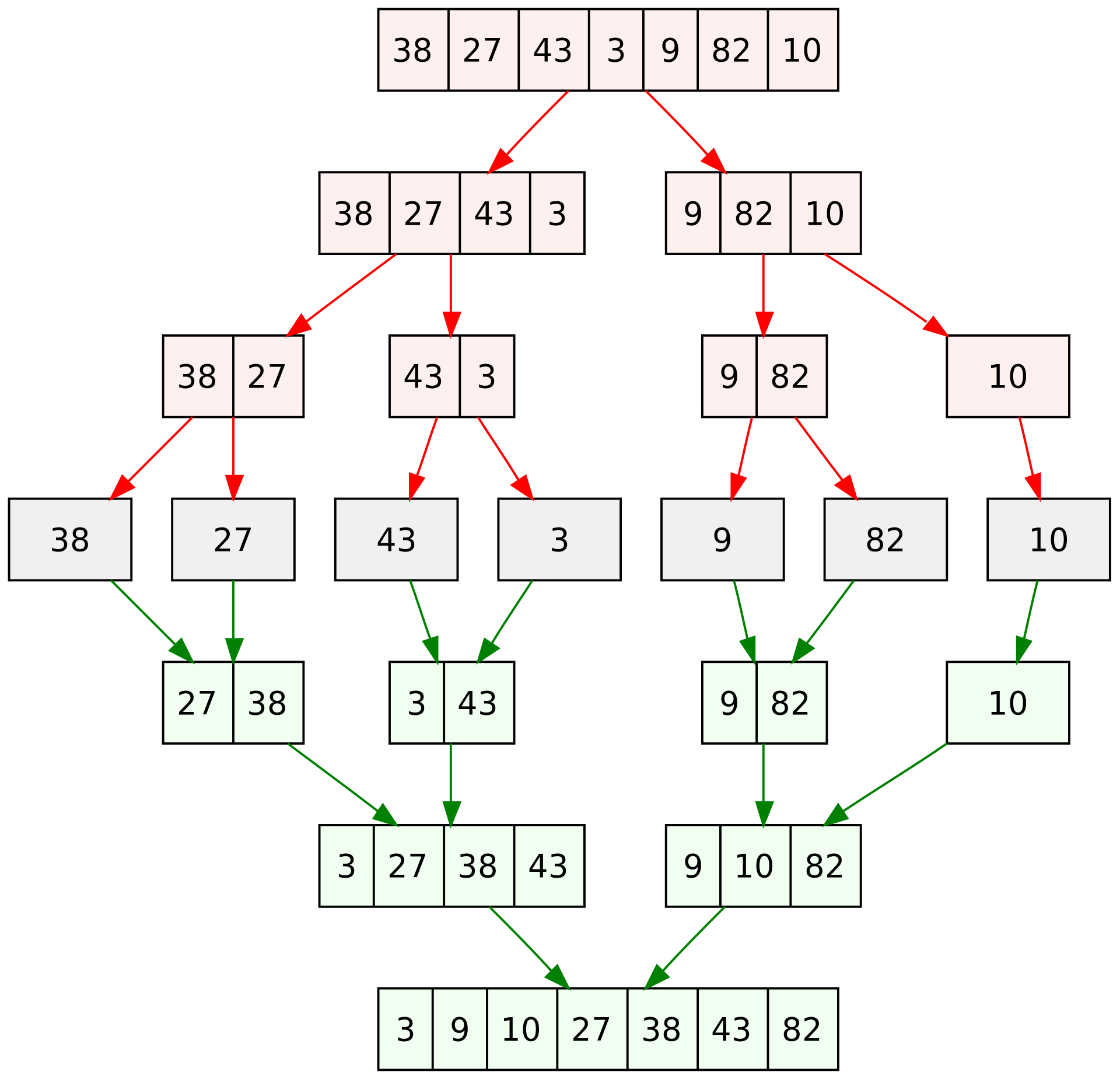Reputation: 311
Altering my usage of channels in mergesort kills my program; OR am I misunderstanding scope when dealing with goroutines?
A few days ago, I posted this topic on the Code Review site. In it, I detailed my first attempt at implementing goroutines into my mergesort code and while it worked fine, I was hoping for a better implementation. As I thought about it more, I had what I thought was a solid idea: instead of constantly waiting for both the left and right side to complete before merging both sides together, why not take the (presumably) sorted singleton chunks you get from the left side as it is sorting itself and sorted single chunks you get from the right and sort those as they come?
I attempted to restructure my code but I've run into a bit of an issue: from what I can tell, my implementation of the base case has caused massive problems, or I am misunderstanding the scope of goroutines and am telling channels to close when they, in a different sort block, are still being used. I was hoping someone could help me refine my understanding or, on the chance that my code is broken in a simple fashion, help me to understand an issue I will present after this code:
package main
import (
"crypto/rand"
"fmt"
"os"
"strconv"
)
var (
nums []byte //The slice of numbers we want to sort
numVals int = -1
)
//User can optionally add a parameter that determines how many random numbers will be sorted
//If none are provided, 100 will be used
func main() {
if len(os.Args) >= 2 {
numVals, _ = strconv.Atoi(os.Args[1])
} else {
numVals = 2
}
nums = initSlice()
ms := make(chan byte)
go mergeSort(nums, ms)
pos := 0
for val := range ms {
nums[pos] = val
pos++
}
for _, value := range nums {
fmt.Printf("%d\n", value)
}
}
func initSlice() []byte {
vals := make([]byte, numVals)
_, err := rand.Read(vals)
if err != nil {
panic(err)
}
return vals
}
func mergeSort(arr []byte, ms chan byte) {
if len(arr) <= 1 {
if len(arr) == 1 { //base case
ms <- arr[0]
}
close(ms)
return
}
leftMS := make(chan byte)
go mergeSort(arr[:len(arr)/2], leftMS)
rightMS := make(chan byte)
go mergeSort(arr[len(arr)/2:], rightMS)
left, lOK := <-leftMS
right, rOK := <-rightMS
for lOK && rOK {
leftLeast := left <= right
if leftLeast {
ms <- left
left, lOK = <-leftMS
} else {
ms <- right
right, lOK = <-rightMS
}
}
if lOK {
ms <- left
for val := range leftMS {
ms <- val
}
}
if rOK {
ms <- right
for val := range rightMS {
ms <- val
}
}
close(ms)
}
Overall, my biggest question would be, let's say we have the following sort:

If I am currently working through '38' and '27' pairing and I close that ms channel, I would expect it is not the same channel as the channel that starts everything off in main? If not, is there a way I can create new channels recursively while still keeping the name?
Hope this all makes sense and thanks for the help.
Upvotes: 1
Views: 60
Answers (1)

Reputation: 51587
Your channel use is not your problem. There are two problems with your program.
First, you have to collect the results in a separate array in the main goroutine, otherwise, you'll be modifying the array you're sorting as it is being sorted.
Second, this block:
} else {
ms <- right
right, lOK = <-rightMS
It should be
right, rOK = <-rightMS
You're setting lOK with rightMS, not rOK.
Upvotes: 1
Related Questions
- Go concurrency, goroutine synchronization and closing channels
- Go Channels behaviour that i do not understand
- Channels concurrency issue
- Confused about channel argument for Goroutines
- goroutines deadlock when using channels
- go-routines and channels in go
- Goroutines channels and "stopping short"
- goroutine out put to channel order fixed?
- Stuck with Go concurrency
- Go concurrency and channel confusion